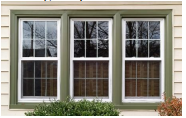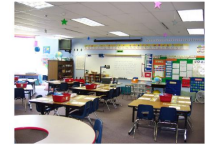General Information
Benchmark Instructional Guide
Connecting Benchmarks/Horizontal Alignment
Terms from the K-12 Glossary
- Circles
- Cones
- Cubes
- Cylinders
- Rectangles
- Spheres
- Squares
- Triangles
Vertical Alignment
Previous Benchmarks
Next Benchmarks
Purpose and Instructional Strategies
The purpose of this benchmark is to allow students an opportunity to apply understanding of classification and language they have learned regarding figures to the real world (MTR.7.1).- Instruction should include objects that may not be a perfect representation, but are approximate models for representing appropriate figures.
- Instruction should include bringing in additional items that are familiar and can be modeled by appropriate figures (cans of soup, cardboard boxes, waffle cones, coins etc).
Common Misconceptions or Errors
- In real life, many objects can be appropriately modeled with both two-dimensional and three-dimensional figures. For the purpose of this benchmark, do not struggle with this. Allow students flexibility and rely on their justifications (MTR.4.1, MTR.6.1).
Strategies to Support Tiered Instruction
- Teacher provides paper pictures of real-world 3-dimensional objects to help students
develop the understanding that some 3-dimensional objects can be modeled by using 2-
dimensional shapes.
- For example, teachers can show students a picture of a window and explain that it can be described as a rectangle. Or if the window has several sections it can be described as a figure being composed of several rectangles.

- For example, teachers can show students a picture of a face of a nickel and
explain that it can be described as a circle. Then teachers can show students an
actual nickel and ask “Is there any other shape they can be used to describe the
coin?”
- Teacher can explain and demonstrate how both a circle and a cylinder are both correct responses. If students have difficulty recognizing that the nickel is a cylinder, the teacher can stack several nickels on top of each other to provide further support.
- Teacher provides a collection of items that can be found in everyday life (large container of rolled oats, tissue boxes, plastic spice container, shampoo bottles, orange cones used in sports, etc.) and asks the student to find the everyday items that matches a solid figure from the classroom set of shapes.
- For example, hold up the cylinder and ask the students, “Which of the items on the table are an example of the cylinder that is in my hand?”
Instructional Tasks
Instructional Task 1 (MTR.4.1, MTR.6.1, MTR.7.1)
Using a graphic organizer, allow students to observe objects they find around the classroom, providing students an opportunity to record their observations. After recording students can discuss in teams what they found, providing justifications for the choices they made.Encourage students to use language and criteria they have developed regarding identifying figures, such as the number of sides, two-dimensional versus three-dimensional, straight sides or curved sides.
Instructional Items
Instructional Item 1
Using the image below, draw a box around all the rectangles you see, draw a circle around all the circles you see and draw an “x” over all the spheres you see.
*The strategies, tasks and items included in the B1G-M are examples and should not be considered comprehensive.
